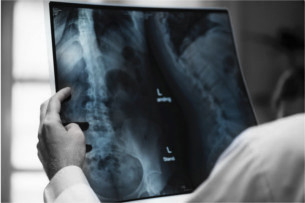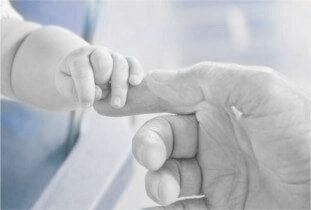Cleveland Birth Injury Attorneys Understand Cerebral Palsy
Negligence before, during, or after the birth of a baby may cause cerebral palsy
Cerebral palsy is a broad term used to describe an impairment of motor function. Cerebral palsy may be caused by either a brain injury or abnormal brain development. Brain injuries that occur during birth may lead to cerebral palsy. Tragically, in some cases, a medical professional’s negligence is the cause of cerebral palsy. At The Eisen Law Firm, our Ohio birth injury attorneys hold medical professionals accountable when their negligence causes this potentially devastating condition.
Types of cerebral palsy
There are four primary categories of cerebral palsy.
Spastic, or pyramidal, cerebral palsy is the most common. With spastic cerebral palsy, an individual develops tight muscles that cannot be relaxed. The joints around these muscles also become stiff, and it is hard for the affected individual to move them. Controlling movements and speech is difficult, and balance and coordination may also be poor.
There are four types of spastic cerebral palsy.
With hemiplegia or diplegia, either one arm and one leg on the same side of the body (hemiplegia) or both legs (paraplegia or diplegia) are affected. Hemiplegia and diplegia are the most common types of spastic cerebral palsy.
A diagnosis of monoplegia means that only one arm or leg is affected by the condition.
With quadriplegia, both arms and both legs are impaired. Muscles in the core, as well as muscles in the mouth, tongue, and windpipe, may also be affected. This can make eating and speaking very challenging.
If an individual has triplegia, three limbs are affected.
The second major type of cerebral palsy is nonspastic, or extrapyramidal cerebral palsy. This includes dyskinetic cerebral palsy, which presents with fluctuating muscle tone. The individual’s muscles will either be loose or tight at times. Involuntary movements may also occur. Ataxic cerebral palsy is the least common type of the condition. It impacts an individual’s entire body. Coordination, balance, hand control, and precise movements are all difficult.
The third type of cerebral palsy is mixed cerebral palsy, which is when one person has features of more than one type of cerebral palsy.
Finally, total cerebral palsy affects the entire body. This type of cerebral palsy may include spastic quadriplegic cerebral palsy, dyskinetic cerebral palsy, or ataxic cerebral palsy.
How are babies diagnosed with cerebral palsy?
There is no single test that diagnoses an infant or child with cerebral palsy. If symptoms are especially severe, a diagnosis may be made soon after birth. Signs that medical professionals may look for in infants include:
- A weak or shrill cry
- A very relaxed, “floppy” body or a stiff body
- Irritability while awake; the baby may be easily startled
- Difficulty sucking and swallowing
- Sleeping excessively or showing little interest in their surroundings
In most cases, a diagnosis is not made until the brain is fully developed, which occurs at 3 to 5 years of age. In addition, a diagnosis may take months to complete. Medical professionals will examine when the child reaches developmental milestones, where the child falls on height and growth charts, how the child’s reflexes react, the child’s posture and movement, and whether the child is able to focus on or hear the parent.
Negligence that may cause cerebral palsy
There are a number of complications that may result in cerebral palsy. These include:
- Failing to detect and treat infections during pregnancy
- Complications from drugs or surgical procedures
- Failing to properly monitor a baby’s heart rate during delivery
- Failing to perform a Caesarean section when necessary
- Using delivery instruments, such as forceps or a vacuum, improperly
- Failing to diagnose umbilical cord issues
- Failing to treat severe jaundice
An experienced medical negligence attorney will be able to examine medical records and determine whether a medical professional’s actions deviated from the standard of care, causing harm to the baby.
Contact leading Ohio birth injury attorneys if you have questions
At The Eisen Law Firm, our Ohio birth injury attorneys know that a cerebral palsy diagnosis can be devastating for parents. We offer a free consultation to discuss your child’s health and what may have led to this diagnosis. To schedule your consultation, call 216-687-0900 or contact us online today.




